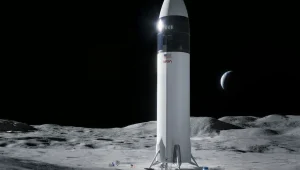NASA's ambitious Artemis 3 mission, aimed at achieving a crewed lunar landing in September 2026, faces a substantial risk of delay, according to an analysis from the agency's own assessment reviewed by the Government Accountability Office (GAO).
The assessment, conducted during a Key Decision Point C confirmation review for the Human Landing System (HLS) Initial Capability project, indicates that there is a nearly one-in-three chance the mission's SpaceX-built Starship lunar lander could be delayed by at least a year and a half. This delay projection sets a schedule baseline of February 2028 at a 70% joint confidence level, meaning there is a 70% chance the lander will be ready for a critical lunar orbit checkout review by that time.
“The joint cost and schedule confidence level is an integrated analysis of a project's cost, schedule, risk, and uncertainty, which indicates a project's likelihood of meeting a given set of cost and schedule targets,” explained the GAO in its June 20 report on major NASA programs.
Despite these projections, NASA officials reaffirmed the agency's commitment to the current schedule. “The GAO report's cost and schedule baseline figures are accurate, risk-informed estimates at the 70% joint confidence level,” NASA stated in response to the report.
Cathy Koerner, NASA associate administrator for exploration systems development, reiterated the agency's stance during a recent meeting, highlighting SpaceX's progress with the HLS project. She acknowledged technical challenges ahead, noting the importance of upcoming milestones such as the in-space cryogenic propellant transfer test planned for early 2025.
However, concerns persist about potential delays. The GAO report underscored the significance of SpaceX's in-space propellant transfer tests influencing the program's critical design review slated for 2025.
NASA emphasized its confidence in SpaceX as a key partner for the Artemis III mission despite the identified risks. “NASA continues to have confidence in SpaceX as a provider to help achieve the Artemis III mission,” the agency stated.
The KDP-C confirmation review also outlined financial commitments, setting a cost estimate of $4.9 billion for the HLS Initial Capability project, including a $2.9 billion fixed-price contract awarded to SpaceX. This figure encompasses earlier awards to SpaceX, Blue Origin, and Dynetics, as well as NASA project office costs.
While NASA maintains its timeline for Artemis 3, officials acknowledged ongoing contingency planning. “We have lots of people looking at lots of backup plans so that we are doing due diligence,” Koerner affirmed.
